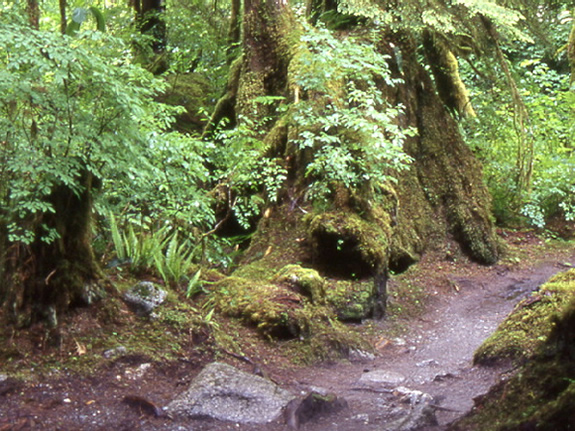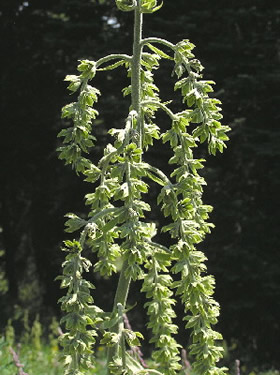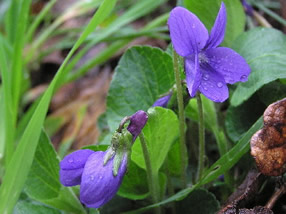|
A walk in the woods allows a glance through nature's window at a multitude of wondrous plants. There is the huge array of different fungi, green mosses as well as opportunities to see the secretive lichens. Besides these plants there is a great number of wildflowers and shrubs which contribute to this wonderful habitat.
Nature once again shows amazing diversity through allowing us to experience these pleasures at different times of the year, thus making our woodland walks exciting throughout the changing seasons.
Come for a stroll and keep your eyes open! |
|
An unusual group of plants that thrive in the darkest corners of the forest are parasitic plants.
Their unusual shapes and features make them fascinating to observe and photograph.
They are also interesting in that they can only survive by taking nutrients from host plants.
There are many of these parasitic plants and they have a variety of different hosts including
trees and fungi.
On the right is a group of the unusual
Candy Cane plant, Allotropa virgata. |
__ |
|
|
|
__ |
|
__ |
|
This Candy Cane plant, Allotropa virgata, left, is found in the forests of the Pacific Northwest and is dependant on the fungus Matsutake mycelia which attaches itself to the roots of trees forming a symbiotic relationship. This fungus provides nutrients to the Candy Cane plant and must be present if the Candy Cane plant is to grow.
Woodland Pinedrops, Pterospora andromedea, centre, also use a fungus as a host. Pinesap, Monotropa hypopithys, right, has no chlorophyll and gets its nutrients through parasitism on fungi. It can live in very darks parts of the forest. An interesting feature is that it tends to bloom yellow in the summer but reddish in the autumn. |
| |
|
|
 |
__ |
|
A contrast between the two pinesap colours, reddish colour, left, and with yellow flowers, above. |
| |
|
|
This is a group of Indian Pipe, Monotropa uniflora, flowers which shows the lack of chlorophyll.
This makes it impossible for it to obtain energy from sunlight, leaving it to get nutrients from the organic matter in the soil.
This plant goes black with age. |
__ |
|
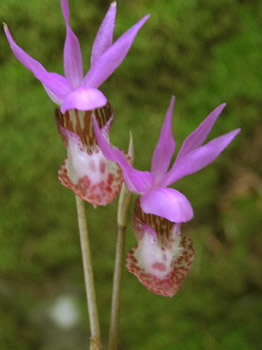
|
__ |
The stunning Calypso orchid, Calypso bulbosa, may resemble an exotic tropical flower. It, too, is actually dependant on fungi found in the soils of the forest floor.
Also known as, Fairy Slipper and Venus's Slipper, its genus name Calypso, is from Greek meaning "concealment" as it tends to be found hidden on the conifer forest floor. |
| |
|
|
|
__ |
|
Adding to diversity on our stroll, we come across some of the most poisonous plants, Baneberry, Actaea rubra, left, and Green False Hellebore, Veratrum viride, right, also known as Indian Poke and a host of other local names. |
| |
|
|
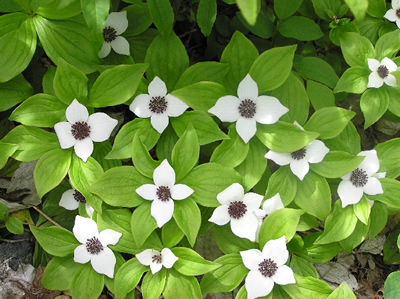 |
Many ground covering plants enjoy the shade of the trees and show this with a multitude of flowers. One that takes this opportunity is the beautiful Dwarf Dogwood, also known as Bunchberry, Cornus canadensis. |
| |
|
|
|
__ |
|
Violets like these Blue Violets, Viola adunca, left, add splashes of colour in the springtime. The Streambank or Pioneer Violet, Viola glabella, right, grows profusely and and can blanket large areas. |
| |
|
The Yellow Montane Violet, Viola praemorsa, is not so common and is usually associated with the forests at higher elevations. |
|


